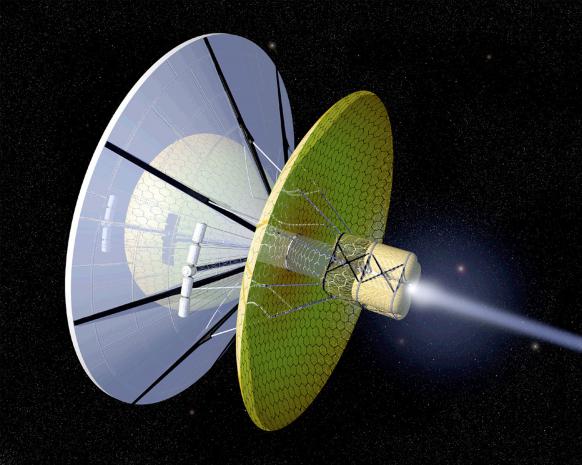
Breaking News
 The Fed's Pivot: The Return of Easy Money and the Inflation Storm Ahead
The Fed's Pivot: The Return of Easy Money and the Inflation Storm Ahead
 This One-Person eVTOL Will Soon Offer Bird's-eye Views of Las Vegas
This One-Person eVTOL Will Soon Offer Bird's-eye Views of Las Vegas
 Emergency Update: Steve Slepcevic Reports Live on Hurricane Melissa's Devastation in Jamaica
Emergency Update: Steve Slepcevic Reports Live on Hurricane Melissa's Devastation in Jamaica
Top Tech News
 Graphene Dream Becomes a Reality as Miracle Material Enters Production for Better Chips, Batteries
Graphene Dream Becomes a Reality as Miracle Material Enters Production for Better Chips, Batteries
 Virtual Fencing May Allow Thousands More Cattle to Be Ranched on Land Rather Than in Barns
Virtual Fencing May Allow Thousands More Cattle to Be Ranched on Land Rather Than in Barns
 Prominent Personalities Sign Letter Seeking Ban On 'Development Of Superintelligence'
Prominent Personalities Sign Letter Seeking Ban On 'Development Of Superintelligence'
 Why 'Mirror Life' Is Causing Some Genetic Scientists To Freak Out
Why 'Mirror Life' Is Causing Some Genetic Scientists To Freak Out
 Retina e-paper promises screens 'visually indistinguishable from reality'
Retina e-paper promises screens 'visually indistinguishable from reality'
 Scientists baffled as interstellar visitor appears to reverse thrust before vanishing behind the sun
Scientists baffled as interstellar visitor appears to reverse thrust before vanishing behind the sun
 Future of Satellite of Direct to Cellphone
Future of Satellite of Direct to Cellphone
 Amazon goes nuclear with new modular reactor plant
Amazon goes nuclear with new modular reactor plant
 China Is Making 800-Mile EV Batteries. Here's Why America Can't Have Them
China Is Making 800-Mile EV Batteries. Here's Why America Can't Have Them
Science fiction revisited: Ramjet propulsion

In science fiction stories about contact with extraterrestrial civilisations, there is a problem: What kind of propulsion system could make it possible to bridge the enormous distances between the stars? It cannot be done with ordinary rockets like those used to travel to the moon or Mars. Many more or less speculative ideas about this have been put forward—one of them is the "Bussard collector" or "Ramjet propulsion". It involves capturing protons in interstellar space and then using them for a nuclear fusion reactor.
Peter Schattschneider, physicist and science fiction author, has now analyzed this concept in more detail together with his colleague Albert Jackson from the USA. The result is unfortunately disappointing for fans of interstellar travel: it cannot work the way Robert Bussard, the inventor of this propulsion system, thought it up in 1960. The analysis has now been published in the scientific journal Acta Astronautica.
The hydrogen-collecting machine
"The idea is definitely worth investigating," says Prof. Peter Schattschneider. "In interstellar space there is highly diluted gas, mainly hydrogen—about one atom per cubic centimeter. If you were to collect the hydrogen in front of the spacecraft, like in a magnetic funnel, with the help of huge magnetic fields, you could use it to run a fusion reactor and accelerate the spacecraft." In 1960, Robert Bussard published a scientific paper about this. Nine years later, such a magnetic field was described theoretically for the first time. "Since then, the idea has not only excited science fiction fans, but has also generated a great deal of interest in the technical and scientific astronautics community," says Peter Schattschneider.
Peter Schattschneider and Albert Jackson now took a closer look at the equations, half a century later. Software developed at TU Wien as part of a research project for calculating electromagnetic fields in electron microscopy unexpectedly turned out to be extremely helpful: the physicists were able to use it to show that the basic principle of magnetic particle trapping actually works. Particles can be collected in the proposed magnetic field and guided into a fusion reactor. In this way, considerable acceleration can be achieved—up to relativistic speeds.

 Handicapped America
Handicapped America China Innovates: Transforming Sand into Paper
China Innovates: Transforming Sand into Paper

